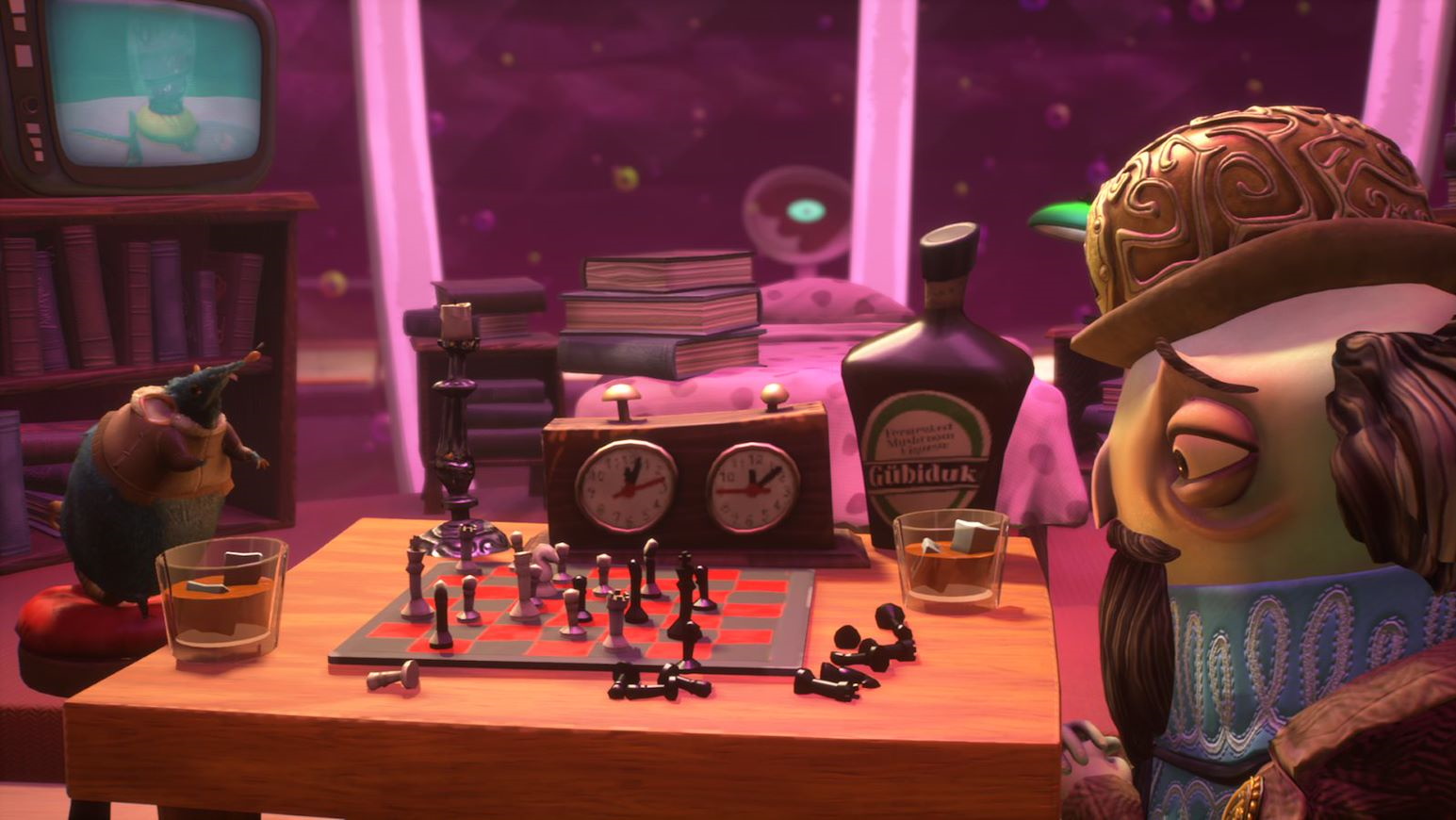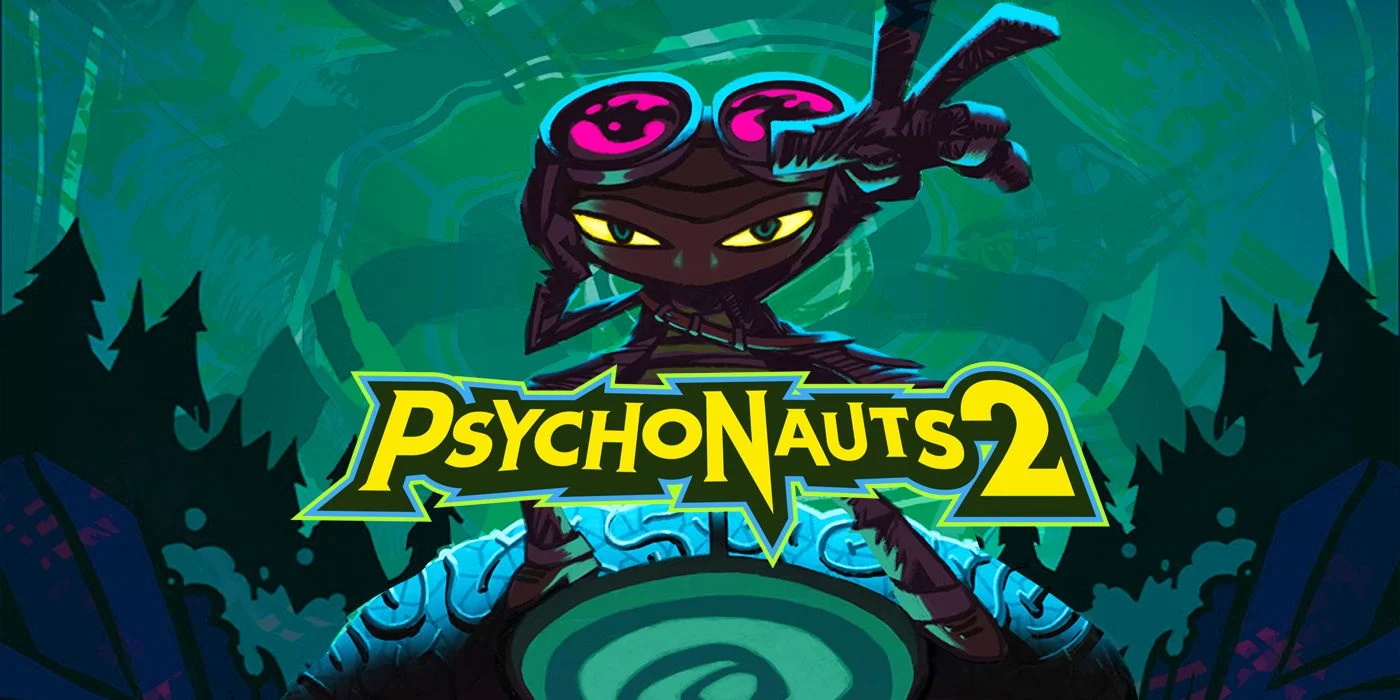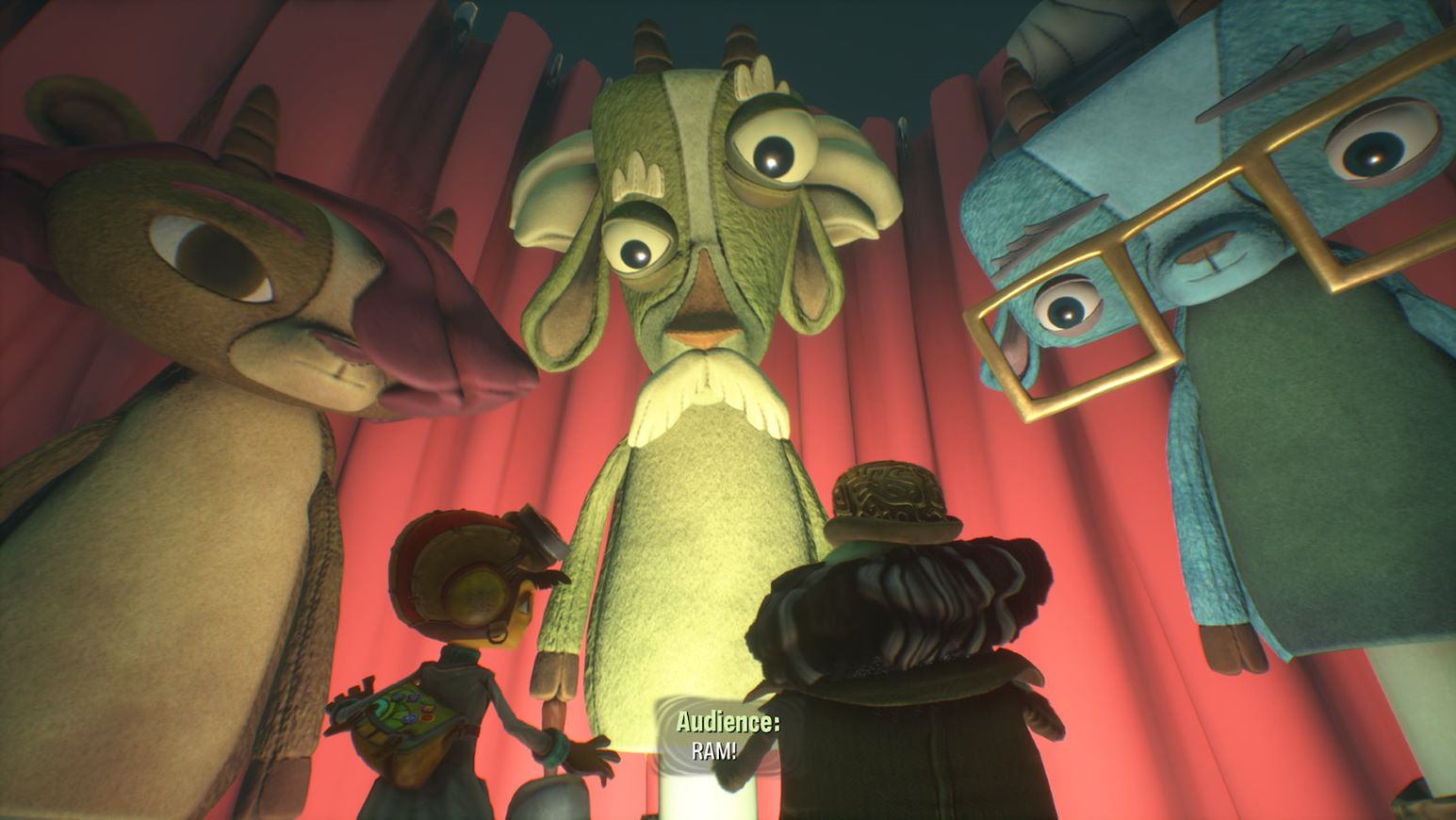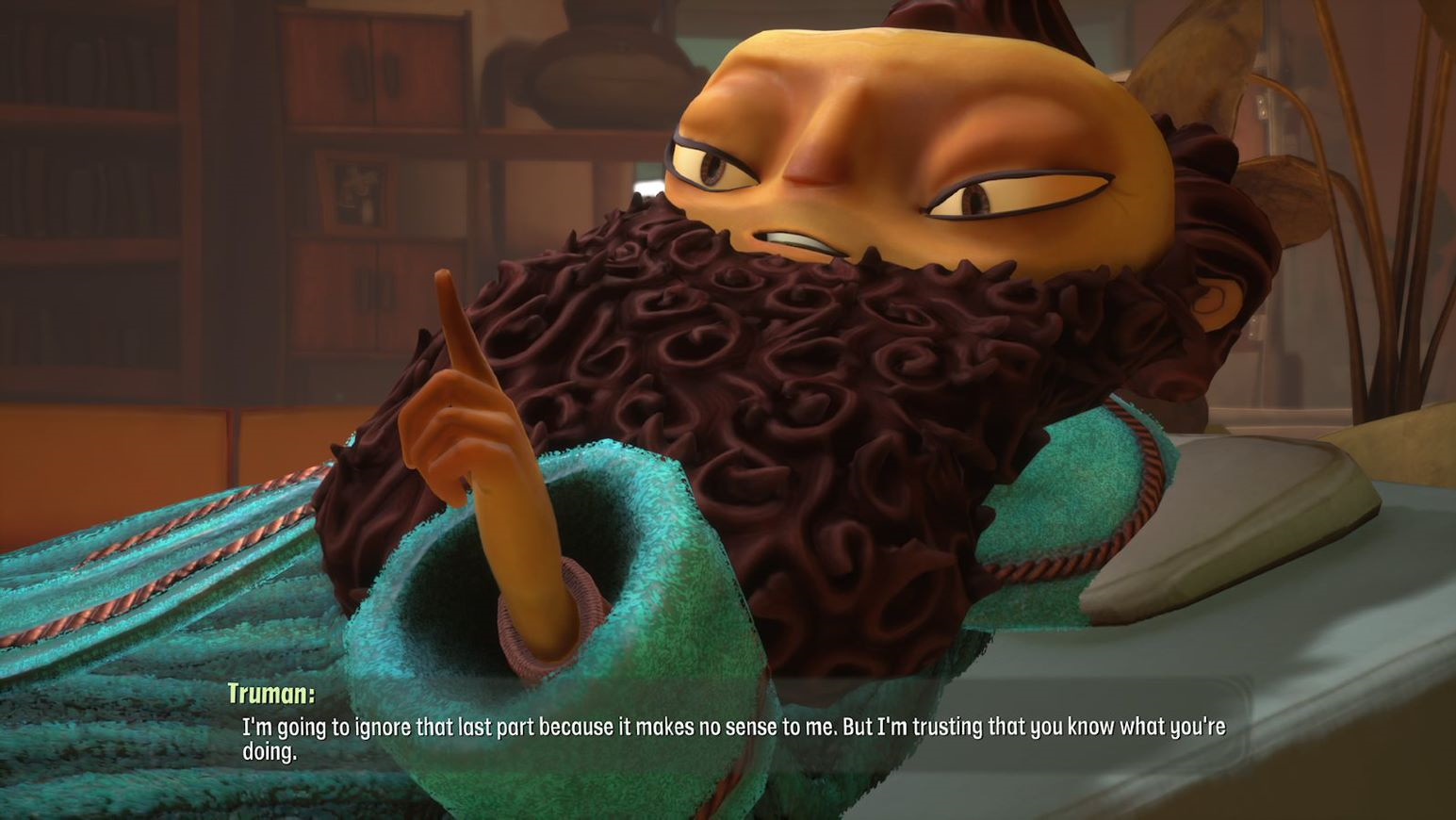Honoring your loved ones’ wishes is important, even if it means slicing up your grandchild and serving them to a panel of judgmental food critics. It’s okay, though. What happens in the mind’s anxiety-induced fantasies stays in the mind in Psychonauts 2 — well, for the most part.
Double Fine’s long-awaited sequel takes everything good from the 2005 original, magnifies it, and throws in dozens of improvements and wonderful designs, all with a sprinkling of thoughtful commentary on mental health for good measure. It might suffer from a few of the genre’s usual low points, but Psychonauts 2 is an outstanding achievement in creativity.
Psychonauts 2 Review: ESP-ecially Extraordinary
It starts a day after The Rhombus of Ruin events, with a handy recap if you’re new to the series or forgot some of its major beats. Raz proved himself and rescued the Grand Head of the Psychonauts, and now it’s time to train at the Psychonaut headquarters, the Motherlobe — except none of his achievements count for anything, and he has to start as a lowly intern.
Raz’s story deftly balances several key strands, including the Aquato family history, Raz’s training as a fledgling Psychonaut, and the backgrounds of the organization’s troubled founders.
All this revolves around Maligula, a rogue Psychic responsible for the drowning deaths of countless people, and her loyal Delugionists bent on reviving the watery fiend. There’s much more to it than that, of course. If you enjoyed Psychonauts’ story, the sequel is a real treat. If you didn’t, good luck maintaining that attitude for long.
The original is hardly light on narrative and character development, but the sequel expands on almost everything that gives the original its identity. That’s what you’d expect from a sequel, but Double Fine doubled down on details in Psychonauts 2.
It’s a rich world, even outside the main storyline. Psychonauts 2 includes a number of optional scenarios delving into side characters’ motivations and relationships or exist just to be wacky.
Other scenes play out as ambiance for Raz to overhear. Motherlobe workers gossip about each other, for example, while the Psychonauts struggle dealing with their mentees on a daily basis.

Several of these are brief exchanges, but some are full conversations and experiences of their own. In one early example with Sasha and Dr. Loboto, I counted close to 10 unique scenarios as the pair grappled to break through the villain’s mental block before the dialogue started recycling.
Whatever the situation, Psychonauts 2 is hilarious. It shares the quirky humor and wisecracks from its predecessor, though executes them more skillfully. There’s also a quieter and unexpected humor that pops up thanks to Psychonauts 2’s more dynamic world.
One notable case that had me laughing out loud was like something out of a comedy, where a receptionist calls “hi!” in an increasingly desperate manner the longer you ignore her.
This is just what’s on the surface, though. Underneath Only — more accurately, inside — is where Psychonauts 2’s biggest developments take place.
Double Fine wanted to emphasize empathy in its sequel, and it does, but in a subtle way. Psychonauts 2 has plenty of thoughts it wants to tell you, but it communicates them indirectly, with plenty of symbolism among the surrealism and humor.
It’s a welcome approach in place of tackling weighty topics head-on in a few ways. Psychonauts 2’s more touching moments carry more weight than the longest pep talk, and it makes the issues more approachable as a result. Being lectured about valuing yourself regardless of judgmental opinion pales in comparison to realizing your own hand was controlling the goat puppet that barfed on your self-confidence to begin with.
It’s a very characteristic way of getting the idea across, but it works wonderfully.
This approach also makes Psychonauts 2’s ideas flexible. It’s easier to absorb messaging about your problems when the story isn’t confronting you directly, after all, but that’s just part of it.
Presenting mental health issues as loosely defined — a need to prove yourself, for example, or pathological aversion to risk — instead of spelling it out in specific detail means you can apply them both to your own situation and maybe, hopefully, learn a bit more about empathizing with other people.
The problem is you can miss some key parts of this messaging in the optional collectibles. Memory Vaults offer a slideshow into the backstory of whoever it is you’re rattling about inside.
A few early ones are surprisingly vital for understanding what ails the minds, touching on topics such as discrimination, dependency, and loneliness, and while the Vaults are relatively easy to find, it would have been nice to see this storytelling aspect woven more closely into the narrative.
Double Fine adopts the opposite philosophy with its levels, despite a conservative approach to changing Psychonauts’ fundamental mechanics.
Many of the same elements from the original return in Psychonauts 2. Raz gets a pool of psychic abilities, ranging from inferno powers to telekinesis and the ability to form connections in people’s minds. These power up as Raz’s rank increases, and he gains ranks and upgrade points by combining Psi Cards with Psi-Challenge Markers.
These are scattered throughout the hub areas and brain worlds, though additional collectibles, such as emotional baggage and figments, are exclusive to the minds of people Raz tries helping. Initially, it seems these serve little purpose beyond giving you something to collect.
Ranking up becomes more important roughly halfway through the story or so, though. Psychonauts 2 is never brutally difficult, though having stronger abilities is never a bad thing.
Aside from setting things on fire and seeing inside the minds of animals, Raz’s moves are standard to most platformers. He jumps, swings, double jumps, dodges, and swings psychically-enhanced fists at his foes.
It’s all pretty standard, but what Psychonauts 2 lacks in mechanical innovation, it makes up for in the boldness and sheer audacity of its inner worlds. You’re creating new synapses in different parts of the psyche one moment. A few hours — and one side trip to the rundown lumberjack pancake shop staffed by woodland creatures — later, you’re rolling a bowling ball across skyscrapers in a germ version of 1920s New York City as the end times (disinfectant spray) approach.
Oh, and the city lives in a bowling shoe inside an old man’s brain. Of course.
That’s what gives life to Psychonauts 2’s moment-to-moment action, with every mind stage a spectacle of creativity both in atmosphere and what they ask of you.
It takes a couple of hours for its brilliance to shine, though. The opening segment in Dr. Loboto’s addled, and faintly disturbing, tooth-filled hellscape is flashy, but pedestrian, as is Raz’s introduction to the Motherlobe. It doesn’t help that Psychonauts 2’s maps act more as art than anything particularly functional and make getting familiar with new areas rather frustrating at times.
Boss fights are simultaneously high and low points. The designs and requirements are genuinely outstanding, but some of the genre’s weak points hold them back occasionally. Fight routines get a little stale, especially if you miss a hit or have to restart.
Where Psychonauts 2 deserves unreserved praise is its style. Naturally, hardware limited how detailed and smooth the original could look, but that’s no longer the case.
Imagine Tim Burton making a claymation film, and you’ve got Psychonauts 2, but it’s not just the big textures and overall atmosphere. Double Fine excels at smaller details too. I never thought I’d say I stopped to admire tongue textures, for example, or the fuzziness of a bathrobe, but Raz’s world just looks that good.
The visual and audio excellence, extensive voice acting, sweeping narrative, and touching storytelling help push Psychonauts 2 beyond just being a good platformer. It’s more like playing a top-notch animated film.
Psychonauts 2 Review: The Bottom Line
Pros
- Fantastic visual direction
- Excellent story
- Sensitive handling of important topics
- Exploding with creativity
Cons
- Plays it safe at times
- Some tedious elements
- Could use better maps
Psychonauts 2 is brilliant. It’s one of the most creative experiences released in recent years, if not in the last console generation. Sure, it could push platforming boundaries a bit more or distance itself further from the genre’s shortcomings, but it’s a set of minor annoyances in what’s otherwise a sensitive and splendid odyssey.
By the way — when is Psychonauts 3 coming out?
[Note: Microsoft provided the copy of Psychonauts 2 used for this review]











Published: Aug 22, 2021 10:28 pm